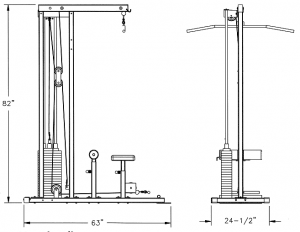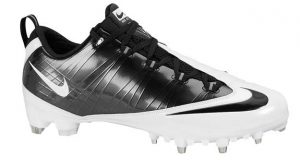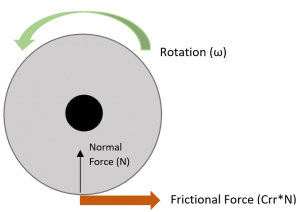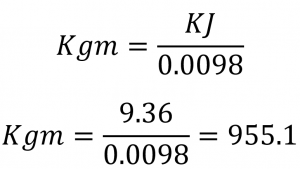IDENTIFY:
Although there currently exists equipment to measure cardiovascular fitness and aerobic endurance, it is not readily available to athletes or personal trainers due to its large size and bulkiness, see figure 1. For example, if endurance athletes want to know their VO2max, they must go to a lab and pay for a test. This is both expensive and inconvenient. As such, a need exists for a more portable VO2max test that is user-friendly and available for purchase on the retail market. Designing a portable piece of equipment to measure aerobic endurance utilizing this technology would benefit many people in their fitness training. One of the most important design criteria when designing a VO2max test is the dimensions of the tube that carries the inhaled and exhaled air, particularly, the diameter and length, as can be seen in figure 1. This is because the dimensions of the tube are directly related to type of air flow (laminar vs. turbulent), and it is crucial that the air flow remains laminar when entering the syringe for analysis1. If this equipment was redesigned to be more compact and portable, the dimensions of the tube would also have to be adjusted. Therefore, if one were to redesign a modern metabolic cart on a smaller scale, it would be necessary to calculate the new length and diameter of the tube, which could be accomplished using Reynolds number. Solving for this value would thereby enable proper design of a portable, compact and user-friendly VO2max test, beneficial for personal trainers, athletes, and health professionals.

Figure 1. VO2max measurement through a modern metabolic cart during a graded exercise test on a treadmill.
FORMULATE:
VO2max is simply a numerical measurement of your body’s ability to consume and utilize oxygen during intense exercise. It is generally considered to be the best indicator of cardiovascular fitness and aerobic endurance. During a VO2max test, one is hooked up to a breathing mask while exercising on a treadmill at an intensity that increases every few minutes until exhaustion. While exercising, the volume and gas concentrations of inspired and expired air is measured. Generally, a higher VO2max indicates better aerobic fitness because it means that your body can take in a large amount of oxygen and successfully deliver it to your muscles, allowing you to run faster for a longer period of time. Thus, after a subject takes a VO2max test, he leaves the lab with a good idea of his current fitness level. Athletes are particularly interested in knowing their VO2max because it is a scientific way of judging their progress and provides accurate results that reflect their aerobic fitness. But another demographic group who could benefit from this new device would be cardiac patients, as well as ICU patients. Critical illness can significantly affect metabolism, so an accurate measurement of aerobic fitness can help determine the energy requirements of ICU patients. A precise calculation of energy expenditure may prevent overfeeding or underfeeding. Therefore, portable VO2max tests would also benefit hospital personnel and allow them to easily transport the device, making it more convenient and readily accessible to all patients.

In the photo above, you can see that there is a tube attached to a mouthpiece worn by the man performing a VO2max test. This tube is typically very long; most tubes used with today’s metabolic carts are approximately 2 meters long or more2. A newly designed and more compact VO2max test would most likely be equipped with a much shorter tube. Therefore, other adjustments in dimensions, such as diameter and length, would need to be made to ensure laminar slow. Laminar flow of air into the metabolic cart is important because it allows for the most accurate analysis of the air being exhaled3. In order to measure VO2max, three parameters must be measured by the VO2max cart: 1) the expired ventilation rate (breathing rate * amount of air expelled), 2) % CO2 expired, and 3) % O2 expired. Therefore, laminar flow of expired air into the metabolic cart is especially important for measuring these parameters.
The nature of a Newtonian fluid flow in a pipe depends on the pipe diameter, the density, the viscosity of the flowing fluid, the length of the tube, and the velocity of the flow. Since the air we expel is a Newtonian fluid, we can use an equation involving these variables to determine whether the flow through a tube is laminar or turbulent. Flow in pipes is considered to be laminar if the Reynolds number is less than 2300, and turbulent if the Reynolds number is greater than 4000. Therefore, we can use the dimensionless Reynolds number, a ratio of dynamic forces of mass flow to the shear stress due to viscosity, to solve what the dimensions of a tube for a metabolic cart should be in order that laminar flow is ensured.

Reynolds number: Re = pvd/u
Where:
p = density of fluid [kg/m3] v = velocity [m/sec]
d = diameter [m] u = dynamic viscosity [Pa*sec]
First, it is necessary to solve for the diameter of the tube, which will be the unknown in the equation Re = pdv/u. Once the diameter is solved for, the hydrodynamic entrance length will be solved for. The length of the hydrodynamic entry region along the pipe is called the hydrodynamic entry length. It is a function of Reynolds number of the flow. In the case of laminar flow, this length is given by: Lh,laminar = (.05)*(Re)*(d). The length of the tube must at least be as long as the hydrodynamic entry flow, in order to have fully developed flow. Typically, metabolic carts are very large, with very long tubes, but if this system could be reduced, to a very small box where all of the gas analysis would take place, the user would prefer to be closer to the box and connected to it via a shorter tube. Therefore, for a design such as this, choosing a tube with the shortest length possible but at least as long as the hydrodynamic entry length would be best. It is already known that the density of exhaled air is 1.2 kg/m3, the velocity of the air we breathe is 2m/s, and the dynamic viscosity of exhaled air is 1.983*10-5 Pa*s 4. Therefore, knowing these three variables, 1) viscosity 2) velocity, and 3) density, setting the Reynolds number to be less than 2300 and plugging these values in will allow us to solve for what the diameter of the air flowing through the tube in these conditions would be. After the diameter is solved for, the length can be solved for by keeping the same values for density and viscosity, and using the hydrodynamic length equation, Lh,laminar = .05*Re*d. This length would be the minimum length possible that still ensures laminar flow through a tube.
SOLVE:
Re = pvd/u and Re must be less than 2300 for laminar flow, so:
[(1.2 kg/m3)*(2 m/s)*(d)] / (1.983*10-5) < 2300.
Solve for d:
d < .02 m
We now know that the diameter must be less than 2 cm, to ensure laminar flow. If we choose 1cm to be the diameter of the tube being designed, it is then possible to use the hydrodynamic length equation to solve for what the minimum length of the tube should be.
Solve for Hydrodynamic Length:
Lh,laminar = .05*Re*d
Lh,laminar = (.05)*(2300)*(.01m)
Lh,laminar =1.15m
From these calculations, the optimal dimensions of a VO2max testing device tube which ensures laminar flow would be a diameter of 1cm and a length of 1.15m. However, these values are approximate and were obtained by making many assumptions, and basing values off of already existing studies. In order to be more precise, velocity could be measured in a separate experiment at varying exercise level intensities, because 2 m/s may not be appropriate for all users of this device. Additionally, there are assumptions made from using the Reynolds equation, including assuming a constant viscosity, and negligible inertial and body forces.
References and Recommended Further Reading
[1] Respiratory analyzer for exercise use
[2] A metabolic cart for measurement of oxygen uptake during human exercise using inspiratory flow rate.
[3] Galdi, Giovanni, Ed., Heywood, John, Ed., and Rannacher, Rolf, Ed. Fundamental Directions in Mathematical Fluid Mechanics. Birkhauser Verlag, Basel, 2000.
[4] Measurement of Lung Tissue Viscous Resistance Using Gases of Equal Kinematic Viscosity
[5] Metabolic cart for Critically ill patients




















 Figure 1. Common strain gauge configurations for measuring axial (left) and bending (right) strains.
Figure 1. Common strain gauge configurations for measuring axial (left) and bending (right) strains.











